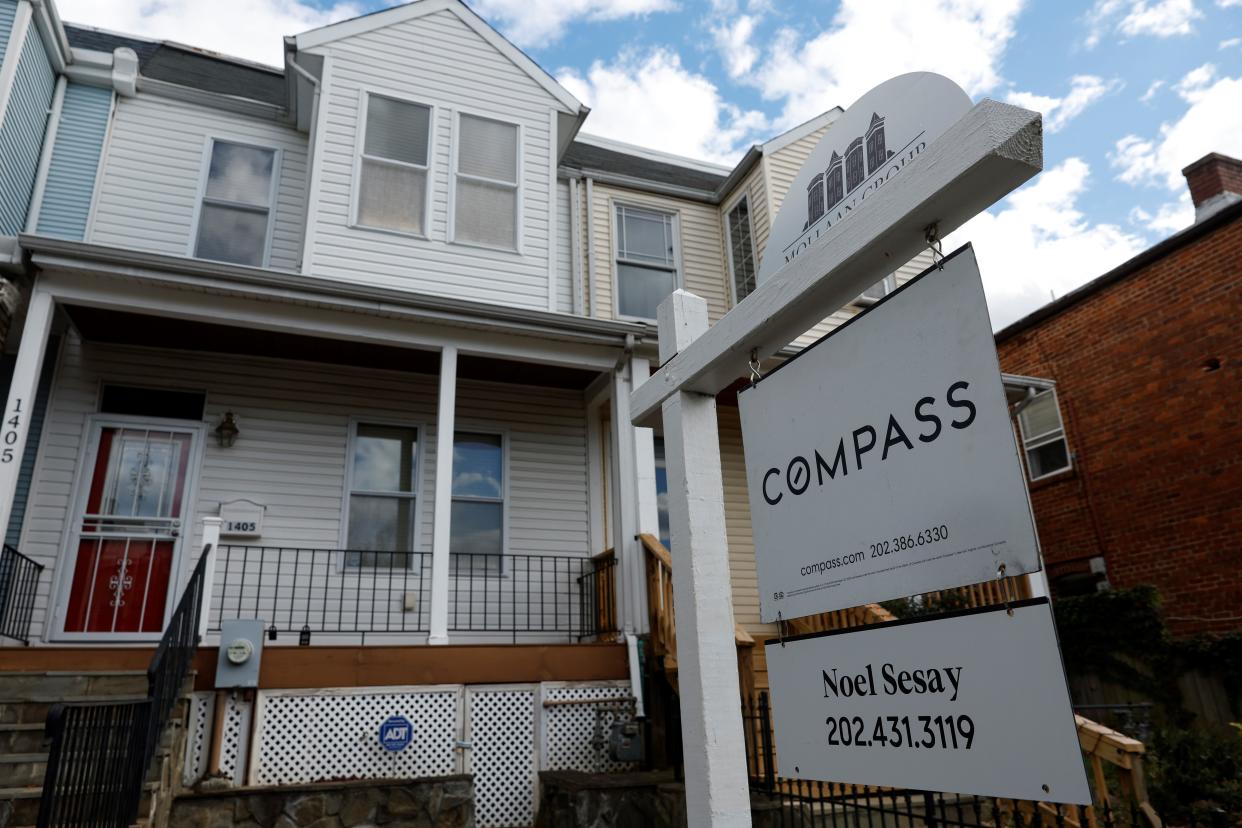'A definitive recovery?' Home prices increase for the second month in a row
US home prices again increased month over month in March, according to two separate indexes, reflecting the continued inventory shortages stymieing homebuyers.
The S&P CoreLogic Case-Shiller US National Home Price index rose 0.4% in March compared with the previous month, according to data released on Tuesday. That was the second straight month of gains after seven consecutive months of price declines. The index uses the repeat sales method to measure home price growth. This method uses data on properties that have sold at least twice to more accurately calculate the change in each home's value.
On a year-over-year basis, home price growth decelerated again. Housing values edged just 0.7% higher in March — lower than the 2.1% annual gain recorded in February. The index is 3.6% below its June 2022 peak.
The index that tracks housing values in the 20 largest metros showed prices in March rose 0.5% on a seasonally adjusted basis over the prior month and fell 1.10% over the same period a year ago. Economists surveyed by Bloomberg expected no change for the month and a 1.60% decrease versus last year.
"Two months of increasing prices do not a definitive recovery make, but March’s results suggest that the decline in home prices that began in June 2022 may have come to an end," Craig Lazzara, managing director at S&P DJI, said in a statement. "That said, the challenges posed by current mortgage rates and the continuing possibility of economic weakness are likely to remain a headwind for housing prices for at least the next several months."
Similarly, the Federal Housing Finance Agency reported Tuesday that home prices increased 0.6% in March from the previous month on a seasonally adjusted basis. On a quarterly basis, US house prices in the first quarter rose 4.3% from the same period last year and were up 0.5% versus the fourth quarter of 2022.
Regionally, the cities that registered the biggest price increases versus last year were Miami, Tampa, and Charlotte, with annual gains of 7.7%, 4.8%, and 4.7%, respectively.
The Southeast remains the nation's most robust housing region, with prices there up 5.4% in March, according to the S&P CoreLogic Case-Shiller index. The FHFA index found that prices in the South Atlantic jumped 7.2% year over year in the first quarter — the strongest showing of the seven census divisions it tracks.
That's a departure from such Western markets as Seattle and San Francisco, which experienced home price declines of 12.4% and 11.2%, respectively. Prices in the West region overall fell 6.2%, the weakest of all regions, according to the S&P CoreLogic Case-Shiller index.
The FHFA reported that the Pacific and Mountain divisions were the only seven census areas that recorded year-over-year home price declines in the first quarter.
"Though the national housing market is far from balanced, many local markets have seen softened prices and climbing inventory, a sign that balance is on the way locally," Hannah Jones, Realtor.com's economic data analyst, said in an emailed statement before both indexes were released. "On the other hand, many low-priced markets continue to see relatively high demand and price growth as buyers flock to areas that are still in the realm of possibility for homeownership."

A dearth of homes for sale remains one of the big drivers of today's housing market, propping up prices.
Elevated mortgage rates also continue to squeeze affordability for buyers, while also discouraging homeowners from listing their properties. The average rate on the average 30-year fixed mortgage increased again last week, according to Freddie Mac, jumping to 6.57% from 6.39% the previous week.
Recent housing data further underscores this inventory imbalance dynamic.
There was no seasonal bump in home sales under contract, with pending sales recording no change from March to April. National Association of Realtors Chief Economist Lawrence Yun largely blamed limited inventory, noting an increase in homes for sale is "critical to get more Americans moving.”
Homebuilders, though, are capitalizing on the shortage of resale homes. Frustrated by the lack of choices, more buyers are choosing new home construction, driving up those sales.
“This phenomenon has become a boon for homebuilders and especially the larger, well-capitalized public builders," Toll Brothers (TOL) CEO Douglas Yearley said on the builder's earnings call last week.
Janna is the personal finance editor for Yahoo Finance. Follow her on Twitter @JannaHerron.
Read the latest financial and business news from Yahoo Finance
